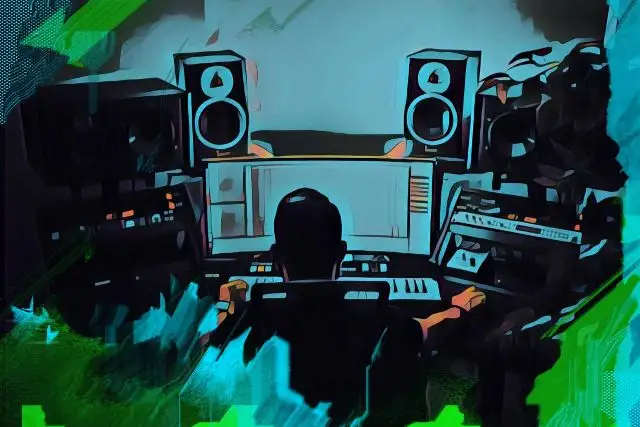To the untrained ear (your college music professor, your mum…) distortion and overdrive sound the same - a cacophony of noise that must be turned down at once, especially if it’s Nickelback.
But there's a distinction between the two. And if you're serious about producing music it's important to understand the difference between distortion and overdrive, and how each can be put to creative use.
Read on to get a better understanding of how these essential guitar pedals work and when to use them in your toons.
Ready? Let's begin with some sound basics.
It's All About The Gain
To the uninitiated gain and volume may seem like the same thing. Both go up and down, and both change how loud something is. But there's a difference between the two.
Think of gain as the level of audio going into something (a mixing desk, a guitar pedal, or an amp), while volume is the level of audio coming out of said thing.
Why do I mention this? Distortion and overdrive are both gain-based effects, increasing the gain of a signal to create harmonic overtones.
In fact, there are four types of gain pedal effects. The other two are boost pedals, and fuzz pedals. All four of these gain pedals can be likened to a temperature scale ranging from mild to super-spicy (where heavy metal is the super-spicy variety).
A boost pedal typically adds gain to a signal before it hits the amp, thus boosting the input signal, but doesn't add any discernible character to the sound. A fuzz pedal creates an extreme form of distortion which we'll dive into later.
For now, let's look into the characteristics that distinguish distortion vs overdrive.
What Is Overdrive?
'Overdrive' was a term originally coined for the sound made by a cranked tube amp pushed to the max. In the time before pedals, guitar players who wanted a little extra bite to their tone would turn up their valve amp as far as it would go. The result of the amp working so hard was a soft clipping in the signal.
The graphic below shows a clean signal (i.e. with no overdrive or clipping) as a simple sine waveform image:
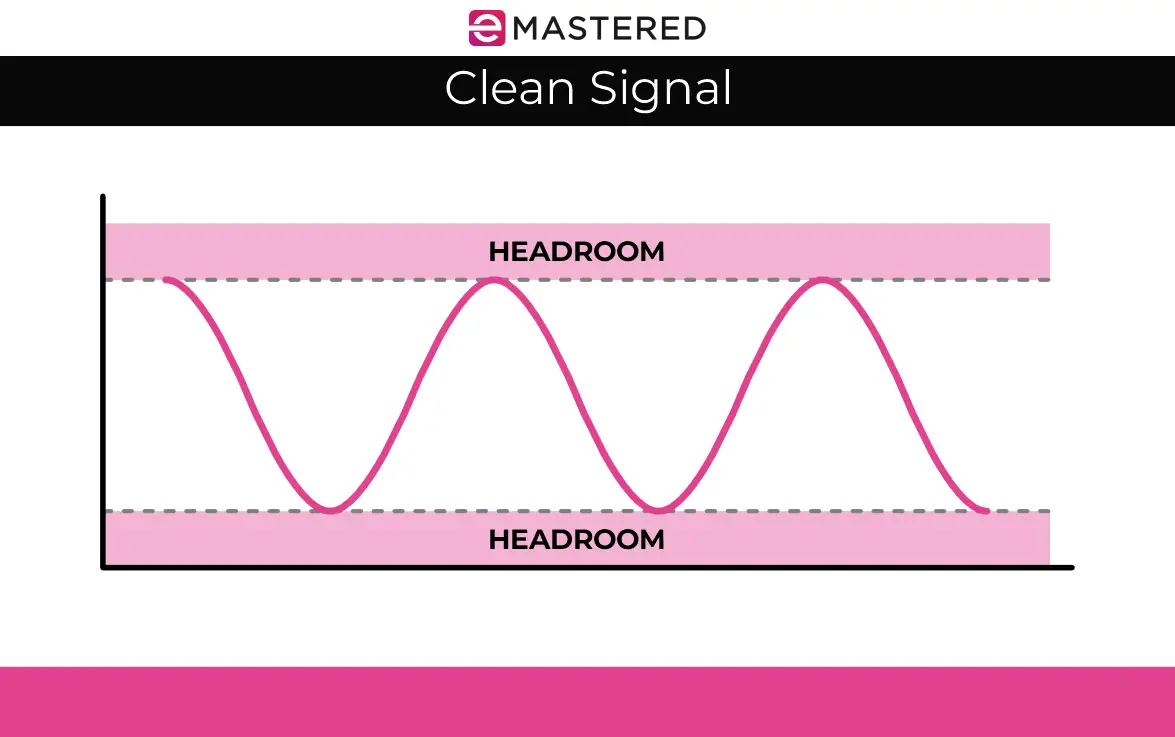
And the next image shows the same sine waveform with soft clipping, as produced by an overdriven tube amp:
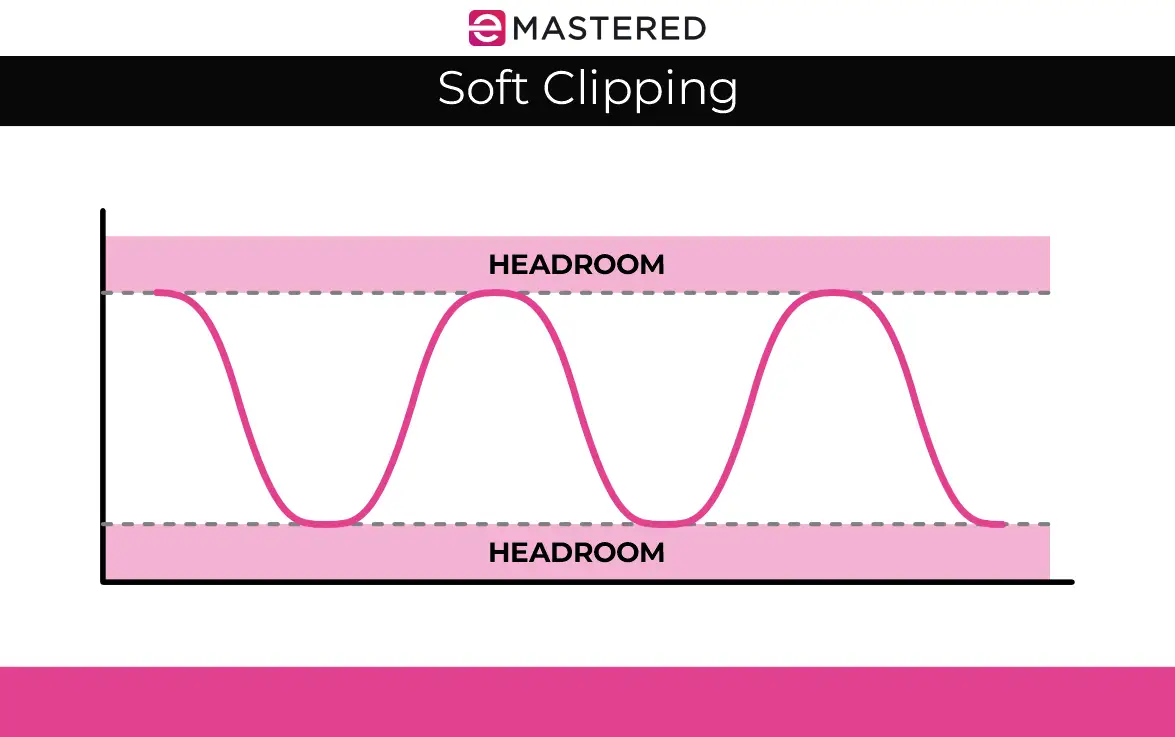
See how the tops and bottoms (peaks and troughs) of the waveform are slightly squashed? That's the tubes doing their thang, and this soft clipping is the overdrive sound.
Needless to say cranking the amp hard enough to get the vacuum tubes to create this effect means your audience (or your neighbors) also have to get an earful. Hence the invention of overdrive pedals, which use circuitry to mimic the sound of an overdriven amp.
Benefits of Overdrive
One of the great things about overdrive is it's dynamic response to your playing style. Because the signal isn't being driven too hard you get to hear subtleties when you play softer, and get a bit more grit as you dig in.
Also, the soft clipping sound, whether created by tube amps or an overdrive pedal, produces a smooth and warm tone.
When to Use Overdrive
Because of the smoother tone it produces overdrive is common in blues, country, and rock, where the name of the game is to add a bit of flavor without overpowering the original tone of the guitar.
Of course, you can use it whenever you want to. It's not uncommon to add a little overdrive as parallel processing on a drum bus, or to add a little crunch to a rhodes sound.
Another way of looking at it is like adding a dash of tabasco sauce to your scrambled eggs in the morning. You want to spice things up, but not so much that you lose the whole breakfasty goodness of the eggs.
Types of Overdrive Pedal
While all overdrive pedals essentially perform the same function, they all do it in slightly different ways. Here's three of the most popular styles of overdrive pedal.
Tube Screamer Style
The Tube Screamer is lauded as the industry standard of overdrive pedals. Originally developed by Ibanez in 1979 the TS9 model is an essential part of any guitarist's pedal board, and many clones of the original tube screamer have been made.
This type of overdrive pedal has a distinctive EQ curve, with a nice boost to the mid-range. This allows axe-people to cut through that pesky front of house mix and stand out from the rest of the band.
Usually the controls are simple - 3 knobs to control drive (the amount of overdrive), tone control (to adjust the frequency emphasis), and level (to control the overall output volume).
Tube screamer-type overdrive pedals are known for their ability to create both subtle and saturated tones, and are often used in conjunction with an amp to get a really creamy, saturated sound.
Bluesbreaker Style
Bluesbreaker-style overdrive pedals were inspired by the original Marshall Bluesbreaker amp, which offered a smooth and responsive overdrive.
Unlike overdrive pedals modeled on the Tube Screamer, which adds a little of it's own characteristics to the guitar tone, a bluesbreaker-esque overdrive pedal offers a more natural sound, maintaining the natural tone of the instrument while adding subtle saturation.
Klon Style
The original Kion Centaur overdrive pedal came out in 1994 and caused a bit of a stir. Instead of using soft clipping overdrive circuits like most overdrive pedals, it used hard clipping (more on that later). Thanks to an additional circuit that blended the clean guitar sound at a boosted level the resulting tone was not harsh, but instead transparent and slightly gritty.
The original pedals were hand crafted, and as they became more popular among musicians it became harder to keep up with demand.
Because of this the line was discontinued, and the original Centaur overdrive pedals still fetch a pretty penny on the used market today. Luckily there have been many imitators of the original, including the Klon KTR, official successor to the Centaur.
Thanks to some subtle upper-mid boosting of the signal, a Klon style overdrive pedal will give your guitar tone bite enough to cut through a mix. Many folks use it for crunchy rock rhythm chugs, but it's equally at home with the gain turned down and just adding vitality to your shredding.
Best Overdrive Pedals
There's plenty of overdrive pedals to choose from - Sweetwater has over 250 different ones currently in stock. Here's three that are great for someone just starting out:
- Ibanez TS808 Original Tube Screamer Overdrive Pedal
- Boss SUPER Overdrive Pedal SD-1
- TC Electronic MojoMojo Overdrive
Best Overdrive Plugins
But what if you produce in the box and want to add overdrive to your newly created fart sample? There's an app for that. In fact, there's several, but here's a handful to get you started:
- Sound Toys Decapitator
- Izotope Saturation Bundle - this actually comes with a whole bunch of plugins for adding dirt to your sound. If you can grab it on sale it's a doozy
- Softtube Saturation Knob (this one's free, so ideal for experimentation on a budget)
What Is Distortion?
Remember how overdrive works? By introducing soft clipping into a signal? Well, distortion works in a similar way, but things get cranked up even more resulting in hard clipping.
Here's our trusty clean signal again:

And here's the same signal with distortion applied:
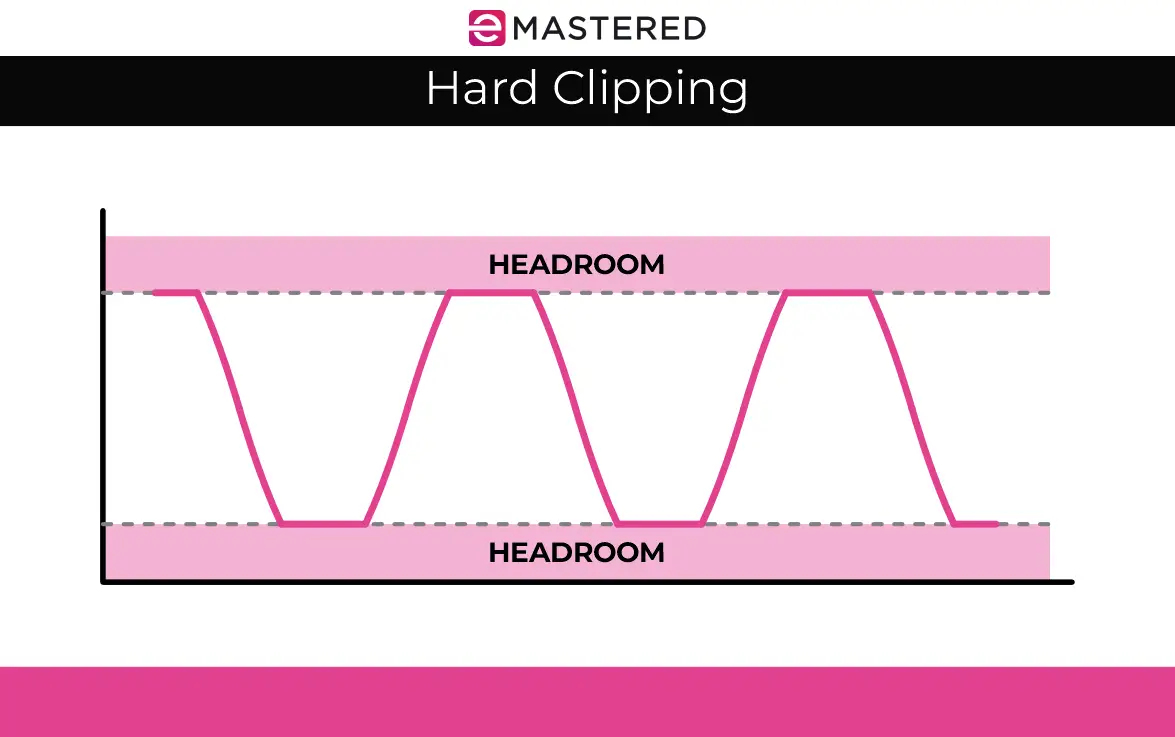
Notice how the peaks and troughs are even more flattened out than with overdrive. The result is a grittier, more aggressive sound, which has more harmonic overtones than an overdriven sound.
Because of the additional volume distortion adds to a signal, the dynamic response is different than overdrive. The tone is more compressed, with a sustain-heavy response. As a result the dynamics of your playing will be squashed by varying degrees, depending on how hard you're distorting things.
Benefits of Distortion
If you want a super-gritty, dirty sound, distortion is the way to go. Better yet, use a distortion pedal so your engineer has a degree of control over things.
As mentioned above, the lack of dynamic response in a distorted signal means even the tiniest pluck you make will come out at full whack. So whether you're strumming with gusto, or tapping the highest fret with a fairy nudge, the resulting volume will be the same. (Excellent news for those guitarists who dislike the word 'expression'.)
The sustain-heavy response also means notes will ring out long past their sell-by date, and can lead to juicy feedback to entertain your fans with.
Finally, a distortion pedal is cheaper, and easier to carry around than an amp (even a solid state amplifier).
When to Use Distortion
Distortion is commonly used in heavier genres of music: hard rock and heavy metal are two examples.
If you're into heavier genres like these it's not uncommon to add an overdrive pedal behind your distortion pedals to get a dense and complex sound. This technique is known as stacking.
But using distortion and distortion pedals isn't just for those who want extra dirt in their tone. Distortion is a useful tool to make things stand out, and you'll often find a guitar player stomping on a distortion pedal to make their solos or power chords sound more prominent.
Types of Distortion Pedals
Just like with overdrive, there's an array of distortion pedals to be found on the market, some designed for specific genres of music.
Three of the most popular models are the MXR Distortion +, the bright orange Boss DS-1 (as used by Kurt Cobain) and the ProCo RAT. All three of these distortion pedals are considered classics, and have been used in rock and related genres since the 1970s.
Best Distortion Pedals
As with overdrive, there's a sh*t-ton of distortion pedals to choose from, and they all have their own distinctive sound that works well for specific genres. So be sure to ask around online and in person about what folks are using.
That said, here's three top recommendations for distortion pedal:
- Boss DS-1 Distortion Pedal
- Ibanezn TS9 Tube Screamer
- JHS PackRat
Best Distortion PlugIns
And for those of you who prefer to keep everything in the box, here's some tasty virtual options:
- Sound Toys Decapitator (one plugin to rule them all!)
- AudioThing Wave Box
- Minimal Audio Rift 2
What Is Fuzz?
While this article is primarily focused on the difference between overdrive vs distortion, I thought it'd be worth touching briefly on a third related effect - namely fuzz.
Just like distortion and overdrive, fuzz adds add clipping to an audio signal, but in a really intense way. So much clipping in fact that the resulting boosted signal is a square wave.
Once again, here's our clean sine wave:

And here's the signal after it's been through a hard clipping device (aka fuzz pedal):
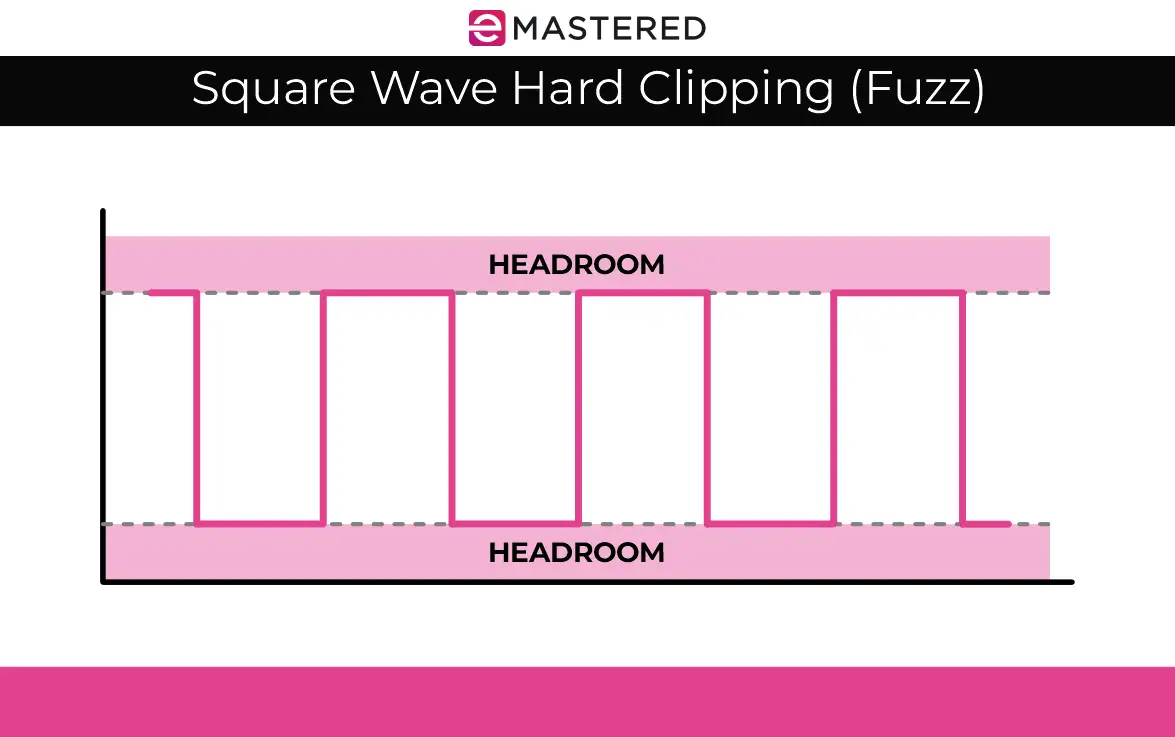
Extreme, right? The square wave that a fuzz pedal creates is saturated with harmonics, giving it a distinctive 'fuzzy' sound that's quite aggressive. While the sound itself can be hard to hear over a full band mix, it's versatility has led it to be embraced beyond rock music into genres like indie, alternative, and even electronic music.
Benefits of Fuzz
While fuzz is somewhat more chaotic than other gain pedals, there's many reasons why you may want to use a fuzz pedal in your set-up.
The distinctive sound can add an edge to your music, and if you combine it with other effects you can create a unique voice. Jimi Hendrix is one of the most well-known users of this kind of pedal, and it's fair to say his voice is pretty exceptional.
The saturation provided by the high gain boost also leads to increased sustain - great for epic soloing.
And while there's less dynamic control than overdrive/distortion pedals provide, if you use fuzz on power chords, or one giant mother of a riff, it's really going to stand out.
Types of Fuzz Pedals
You guessed it; there's a lot of fuzz pedals to choose from. But there's three classic styles that have influenced many a shredder:
Fuzz Face
Fuzz face-style pedals are considered the iconic fuzz pedal. Popular in early psychedelic rock, and made famous by the likes of Jimi Hendrix, you'll find fuzz face lookalikes in many a guitarists' set up.
Tone Bender
While Tone Bender type pedals are generally speaking very aggressive they have a cleaner tone due to a low end cut in the EQ. If you've ever listened to Led Zeppelin you'll have heard Jimmy Page using one.
Big Muff
This type of fuzz pedal is great for a heavy rhythm sound, due to it's whopping low end and pronounced scoop in the mid-range. Most big muff-style pedals include a tone control knob, making it the most controllable of the 'big three'.
Best Fuzz Pedals
Again, lots to choose from here. Ask around, try them out. But here's three for starters:
- Electro-Harmonix Nano Big Muff Pi
- ZVex Fuzz Factory Vertical
- Dunlop JDF2 Fuzz Face
Best Fuzz PlugIns
If you're looking to create fuzz tone in the box your DAW may well have it's own native effect, but here's a selection to try out:
- Kuassa Efektor FZ3603 Fuzz
- Fuse Audio Labs Dozer Drive
- Distorque Face Bender - offers emulations of the Fuzz Face and the Tone Bender. Best of all, it's free!
Things To Keep In Mind
Some people, especially blues guitarists like to use only an amp to get the purist overdrive sound. That's great if you can get away with the sheer volume output involved.
Others use a combination of distortion, overdrive, boost and fuzz pedals as part of a chain going into an amp to drive the signal hot, relying on the amp itself to add the final touches of clipping.
Distortion and overdrive aren't exclusive to guitar players. Some gnarly keyboard players add guitar pedals to their keyboard rigs to give some extra beef to their sounds. And when it comes to producing and mixing music, adding some tasteful overdrive/distortion to parts can add an analog warmth to your material.
Note that distortion in the context of this article is something you intentionally create to sculpt your sound. It's a pleasing effect. Digital distortion on the other hand is most definitely not pleasing, and something you should avoid .
Conclusion
In case your head is reeling from this long discussion of all things distorty , let's recap.
The difference between overdrive and distortion is the amount of clipping they introduce into the signal chain, their dynamic response to playing, and the typical uses in music.
For the foodies among you, if clipping were a chile, overdrive would be a banana pepper and distortion would be a jalapeño.
So there you have it - a complete overview of overdrive, distortion, and fuzz. Now you have a better understanding of how they all work, you can use them in your music to create sonically exciting material.
The best part; you don’t even have to play guitar to make use of these effects - distortion and overdrive can be used creatively on practically any instrument. It's your sound, do what you want with it.
Now go forth and maketh the harmonically rich music.


